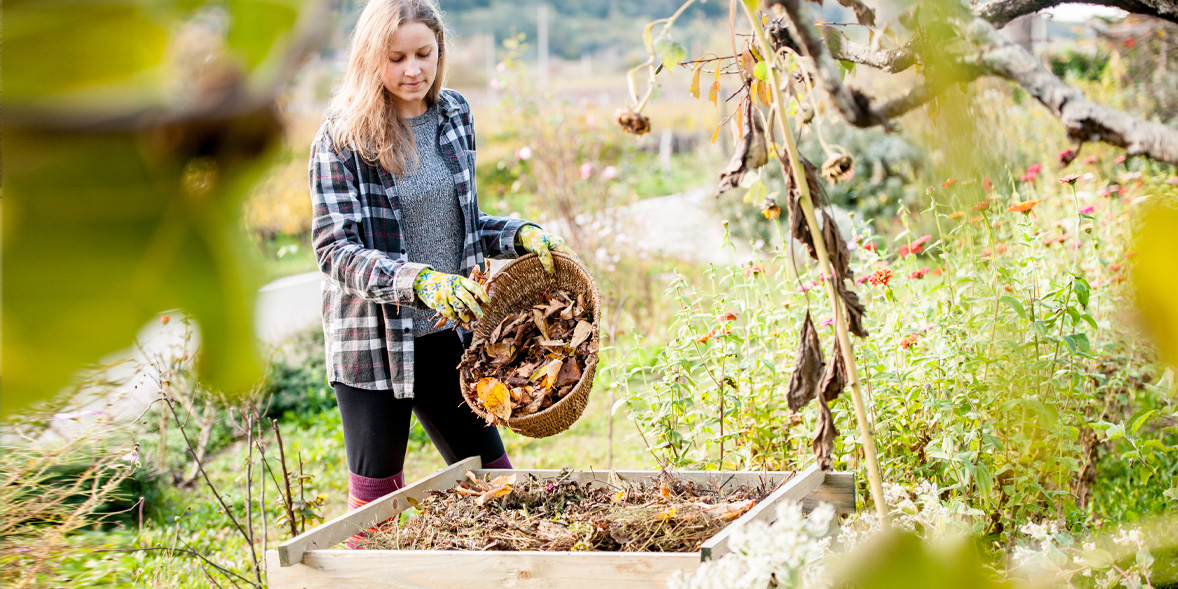
25% off Which? Gardening
Pay £36.75 for the first year and get the garden you want for less
Get this offer
There are many benefits to making your own compost. Adding the finished product to your flower and veg beds is the most natural way to improve the structure, health and vitality of your soil, which in turn improves the health and vitality of your plants.
Compost helps the environment by providing food for all the organisms involved in digesting the ingredients and then it provides food for the soil-dwelling organisms that continue the decomposition process.
It also helps the environment by allowing you to recycle what might otherwise go into council recycling bins. Kitchen scraps, garden prunings, leaves, grass clippings, and a lot of household paper and cardboard rubbish are all perfect ingredients for making compost.
Breathe new life into your outside spaces. Sign up for our Gardening newsletter, it's free monthly
The composting process requires a mix of soft, nitrogen-rich material and woodier, carbon-rich material to work properly. These ingredients need to be in roughly equal proportions, although it’s best to err on the side of slightly more brown than green material, rather than the other way around.
If the heap becomes very wet and slimy or starts to smell, you should try adding more brown material. Conversely, if it looks dry and isn’t breaking down, add some more green waste.
In general, reducing the size of the ingredients produces compost more quickly.
Large kitchen scraps or deadheaded flower stems should be chopped up, pruned material should be shredded, cardboard should be torn up and paper should be scrunched.
Toilet roll tubes and egg boxes can be added as they are.
The compost is ready when it’s brown and looks like soil, even though there may still be some twiggy bits or lumps in it.
Try our Best Buy compost bins

Pay £36.75 for the first year and get the garden you want for less
Get this offerThis includes kitchen scraps (such as citrus peel, onions and rhubarb leaves), coffee grounds and tea leaves, weed foliage, deadheaded flowers and grass clippings.
Shredded prunings and hedge clippings, wood chips, wood ash, sawdust, thin card, cardboard and paper. If you have large amounts of anything, such as hedge clippings or ash, it’s best to add them gradually, making sure you mix them with enough green material each time.
Learn about our Best Buy garden shredders
Garden tool reviews - see all the garden products we test.
If pre-mixing the green and brown material is difficult, we found that a more unconventional ‘lasagne method’ works surprisingly well.

If you have a large lawn and like to collect the clippings after mowing, it can amount to an awful lot of grass through the year. Grass becomes slimy as it rots if you add too much to your heap, and finding enough brown material to prevent that happening can be difficult.
Discover our Best Buy lawn mowers

Leaves are slow to break down, which is why they are often composted on their own. We’ve found that shredding them more than doubles the speed of the process and can be done by running a lawnmower over them or collecting them in a leaf-shredder vacuum.
You can also make leaf mould in composting bins made from stakes and chicken wire. Air circulation would be better with this type of bin, but it’s harder to keep them damp if the weather is dry.
See our leaf blower reviews

Yes, the organisms involved in decomposition in a compost heap need air, so if the heap becomes compacted and airless, the process will slow down or stop.
We’ve also tried out tumbling compost bins in which compost is mixed by turning the bin with a handle, or sometimes by rolling the whole bin. It sounds simple, but our experience shows that once the compost starts to break down, these bins can become heavy and difficult to turn.
Most of the ones we tried were also slower at producing useable compost than much simpler (and cheaper) compost bins that were mixed manually.
The difference comes from the construction of ‘hot composting’ bins, which are normally fully enclosed and made of insulating materials, the technique used for adding the ingredients and the amount of time it takes to rot down.
Creating conditions where the material heats up and then breaks down quickly at a high temperature requires the addition of a lot of material in one go, which should be well mixed with the right proportions of soft, green kitchen scraps, etc, and carbon-containing brown waste.
A hot compost bin can also be used to rot down a much wider range of waste, including cooked food and bones, which should be left out of a colder bin.
Alternatively, buy great-performing soil improvers